| Publications: SRL: Electronic Seismologist |

Thomas J. Owens
E-mail: owens@sc.edu
Department of Geological Sciences
University of South Carolina
Columbia, SC 29208
Phone: +1-803-777-4530
Fax: +1-803-777-0906
Collection of digital seismological data, as fundamental as it is to our science, is a process that has defied standardization from the beginning. Organizations that face this task have options available but are inevitably left with a number of problems unique to their own situations that prevent implementation of a "turn-key" solution. Loyal ES readers will certainly recall a number of guest columns over the years that describe various authors' particular solutions. Knowing what has worked for others is a tried-and-true way to jumpstart yourself when faced with a similar task. Maintaining this tradition, the ES is pleased to host guest columnists Damiano Pesaresi and Nikolaus Horn, who document their experience in getting the Italian National Data Center off the ground.
Damiano Pesaresi
Istituto Nazionale di Geofisica e Vulcanologia (INGV)
Rome, Italy
E-mail: pesaresi@ingv.it
Nikolaus Horn
Zentralanstalt für Meteorologie und Geodynamik (ZAMG)
Vienna, Austria
The Italian Institute for Geophysics and Volcanology (INGV) is hosting the Italian National Data Center (INDC) for the Comprehensive Nuclear Test-Ban-Treaty Organization (CTBTO). One of the main tasks associated with the planned verification system of CTBTO is the production of a bulletin of global seismic activity. Such a bulletin will facilitate the efforts of state parties to monitor events and identify underground explosions that might be conducted in violation of the Treaty. To accomplish this task, a bulletin must cover the entire globe with a minimum threshold and location accuracy specified by the protocol of the treaty. The preparation of the CTBTO networks--the International Monitoring System (IMS)--and of the related International Data Centre (IDC) is ongoing. An important aspect of this preparation process is the evaluation of the quality of all the IDC products, so as to be able to optimize the efficiency and effectiveness of the overall system. Moreover, the tasks of a typical NDC include a mixture of the following: monitoring of the status of the IMS/IDC, contributing to further refinement of the IDC processing, and evaluating the data provided by the IDC. Therefore a NDC must have the capability to process raw data provided by the IMS, combine IMS data with additional data to achieve higher accuracy, and discriminate the nature of an event.
As a contribution to the evaluation task, the technical Working Group B (WGB) of CTBTO has suggested comparison between the bulletins produced by IDC and regional/local networks. The Italian National Data Center has been collecting data since September 2002 from several regional networks in the European-Mediterranean region. The data are collected, processed, stored, and exchanged by the Antelope software package installed on Sun workstations. Previous SRL reports have discussed the use of the Antelope software in comparison with other packages. Following the contributions of Malone (1999) and Hansen (2000), in this report we describe the use of Antelope for the Italian CTBTO NDC in the hopes that our experiences will be useful for other data centers, either dedicated to CTBTO or not.
With recent improvements in information and communication technologies, the main problem in data sharing nowadays is perhaps in the variety of available data formats and protocols. When data exchange was more expensive in earlier times, different formats and protocols (e.g., SAC, SEGY, etc.) were developed to serve specific purposes. Efforts have been made in the seismological community to come up with a single data format, and these efforts led to the definition of the Standard for the Exchange of Earthquake Data (SEED) (Ahern et al., 1993). Unfortunately, CTBTO decided to create its own format and protocol for the exchange of continuous data, named CD-1 (Stead et al., 2002). The Italian CTBTO NDC had to face an additional, more technical challenge as well, namely having to deal with gathering of information from different transmission routes: CTBTO making use of its Global Communication Infrastructure (GCI) satellite system, with scientific institutions more commonly exchanging data in real-time over the public Internet.
CTBTO is tasked by the Treaty itself (UN General Assembly, 1996) to provide technical help to establish CTBTO National Data Centres (NDC's). Only recently have enough resources been devoted to this task, although some goals have already been achieved, such as the opening of the IDC operational database to NDC's. To proceed quickly into operations, the Italian CTBTO NDC decided consequently to make use of the commercial Antelope software from BRTT (Figure 1).
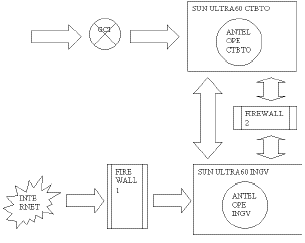
Figure 1. Antelope set-up at the INDC.
Given the need of the Italian CTBTO NDC (INDC) to exchange data both with scientific institutions using SEED format (and thus SeedLink protocol) over the Internet, and over satellite with the CTBTO IDC using the CD-1 format and protocol over a private IP address scheme, the solution involves the use of two Sun Ultra60 workstations, running two copies of the Antelope package. The first workstation is protected by the first INGV firewall but is virtually on the public Internet, acting as the main exchange server. The SeedLink protocol has been developed by GEOFON and is currently supported by Observatories and Research Facilities for EUropean Seismology (ORFEUS). The second Sun workstation, protected by a second firewall, has two network cards: one connected to the land satellite terminal of the GCI to exchange data with the CTBTO IDC over the satellite, and the other connected to the INGV internal LAN. To help improve security, IP routing is not allowed between the two network cards. Data exchange between the two workstations requires a dedicated IP tunneling through the INGV internal LAN firewall and makes use of the proven reliable orb2orb Antelope program to exchange data. In fact, the orb2orb software module is used not only to import data from the scientific community to the Italian NDC, but also the other way around, to export data in real-time from the Italian NDC to the scientific community. Data of the Italian NDC are also accessible via the e-mail standard protocol AutoDRM (Group of Scientific Experts, 1995). Finally, the most protected Sun workstation is also the one dedicated to data archiving, making use of the rtbackup Antelope software module and an external SCSI RAID system of hard disks (Figure 2).
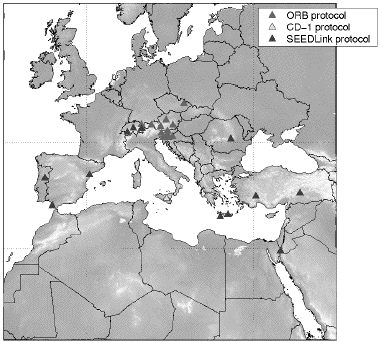
Figure 2. Map of the stations sending data in real-time to the INDC with the relative protocols.
Each Antelope package on each Sun workstation independently executes the same tasks, thus improving the general reliability of the Italian NDC by providing redundancy. The standard software package not only includes real-time data acquisition and processing modules, but also a framework for developing modules for specialized tasks. In the case of the Italian NDC, modules for e-mail alerting and bulletin distribution were written by one of the authors (Figure 3).
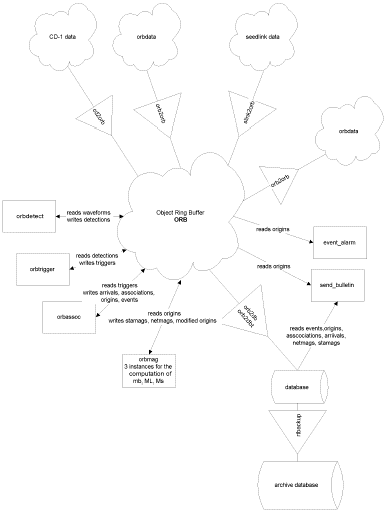
Figure 3. Antelope processing at the INDC.
Following is a list of the software modules used:
Data Acquisition
Processing
Data Distribution
Archiving
System Maintenance/Monitoring
The real-time processing is based on a highly flexible storage module. This module administers a first in-first out ring buffer that allows storing of different types of information: waveform data, database rows, and lines of text, i.e., various objects. The name "orb", which stands for object ring buffer, thus reflects the system architecture. Several data acquisition modules are used, depending on the nature of the data source. In cases where the data are available in CD-1 format, the program cd2orb, which acts both as a connection manager and as the packet receiver, is used to transfer waveform data from the source to the destination orb. The freely available SeisComP software suite (Hanka et al., 2001; Heinloo and Trabant, 2003), developed at GFZ Potsdam and originally based on the Quanterra "comserv" software (Reimiller, 1997), is widely used in the European seismological community for data acquisition and exchange in the SEED format. Data transfer from sources using this software is done in Antelope with the slink2orb program developed at ORFEUS for the MEREDIAN project. With rising popularity of the Antelope software suite, many data centers provide access to their seismic raw data by granting access to their Antelope ring buffers. In this case, and this is also true for the Italian NDC, the program orb2orb is used for data transfer. All incoming waveforms are stored in a database using the program orb2db, while further automatic processing is done on data in the ring buffer. Antelope provides an STA/LTA detector that runs on several user-configurable filter bands. Output of this processing stage is database rows (detection table as defined in the css3.0 schema) that are written to the ring buffer. To allow for maximum flexibility, all parameters can be configured station by station, enabling the user to take different instrument bandwidths and site noise into account. Information on individual station detections is read by another module, orbtrigger, which declares network triggers once a certain number of detections occur within a certain time. As a result of this processing step, the individual onsets are written to the orb as individual trigger database rows and in a combined format for further processing. For event location, the orbassoc module reads the detection times and compares them to recomputed travel times.
Once a location has been determined, magnitudes are computed from velocity amplitudes using the program orbampmag. To obtain results as fast as possible, magnitude computation has been separated into three different parts that are activated in sequential order. As a result of the magnitude computation, orbassoc writes arrival, association, event, and origin database rows to the orb. The body-wave magnitude calculator reads this information and the waveform data to determine the velocity amplitude within a certain time window around the P-wave arrival. Finally, the magnitude is computed using the velocity amplitude, thus making use of the broadband signal from modern sensors. The database origin row read from the ring buffer is written back, but with the magnitude information included. Station and network magnitude database rows (stamag and netmag) are also put into the orb to keep track of the processing. At this stage, sometimes even before the arrival of surface waves required to compute Ms, operators can be informed by alerts sent via e-mail and/or mobile phone short message (SMS) using the module event_alarm. Local magnitudes and surface magnitudes are computed in a similar manner, on different instances of orbampmag but with different magnitude parameters. Once all possible magnitudes are determined, a bulletin is created and distributed via e-mail by use of the module send_bulletin if the relative event meets certain user-defined criteria (Figures 4 and 5).
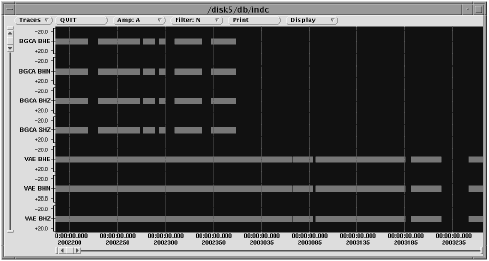
Figure 4. Antelope real-time database.
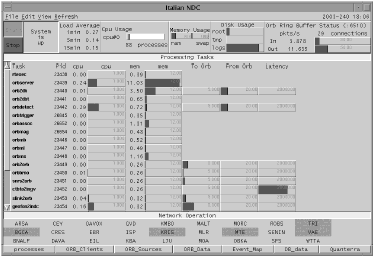
Figure 5. Antelope real-time monitor.
Rules for data exchange with CTBTO have been under discussion for several years now. Two conflicting views have emerged, with some countries in favor of total openness and others of the opposite view. Despite this difference in philosophies, some achievements have been reached on the issue of access to IMS data and IDC products of CTBTO. It is currently standard practice for CTBTO NDC's to have the right to distribute data freely from IMS stations for which they have taken the responsibility of network operation. Also, a couple of years of world seismicity described by the IDC bulletins have been disclosed to the International Seismological Centre.
The Italian NDC conducted a test on this issue by producing and releasing bulletins of world seismicity making use of both scientific and CTBTO seismic stations. Such locations and relative bulletins in IMS1.0 format were sent to the European-Mediterranean Seismological Centre (EMSC) Real Time Seismicity, to the Swiss Rapid Earthquake Data to Pagers, Users, e-Mail recipients, and Authorities (RedPuma), and to ISC. Locations and bulletins from the Italian CTBTO NDC were also available as subscriptions to automatic e-mailing lists. A quick comparison of the locations received by the EMSC shows that Italian CTBTO NDC automatic locations are quite reliable in station coverage area and among the fastest. Also, the comparison revealed in particular the good quality of INDC Ms estimates (Figure 6).
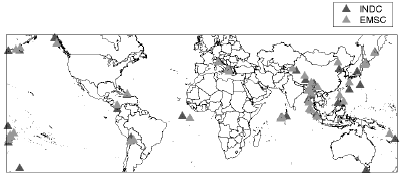
Figure 6. Comparison between INDC and EMSC bulletins.
Given the CTBTO choice to use the CD-1 protocol, a data center that would like to share data in real-time with the IDC must either integrate the NDC-in-a-box software distributed by CTBTO into its own software or obtain a commercial software package. This software should then offer a CD-1 sender and a CD-1 reader, in addition to the usual standard features such as real-time and off-line relational databases, an automatic real-time picking system, and off-line reviewing capabilities. In this era of rapid growth of data exchange in seismology, the more real-time interfaces the software can offer, obviously the better. So far, the only commercial software available on the market having the previously described capabilities is Antelope. It fits very well with the CTBTO model of the needs of an average-size NDC which would like to invest more in analysts than in software developers. Other CTBTO NDC's have decided to write their core software on their own. This requires quite a number of software engineers for quite some time; on the other hand, making use of Antelope, an NDC can concentrate on installation, maintenance, and location reviewing. This latter was the choice of the Italian CTBTO NDC.
As we have already mentioned, CTBTO is currently offering a CD-1 receiver with the "NDC-in-a-box" package distributed to all interested NDC's. The software allows waveforms to be saved on disk, but then the processing of the waveforms is off-line only. Even though CTBTO now offers a CD-1 receiver, data transfer using different protocols is not part of this software. Finally, we note that part of an NDC's work involves verification and deeper investigation of IDC results, and this can be accomplished only by the use of additional data, thus requiring the capability to read both CD-1 and other formats.
Ahern, T. K., R. Buland, and S. Halbert (1993). SEED Format Version 2.3 Reference Manual, IRIS.
Group of Scientific Experts (1995). Formats and Protocol for Data Exchange, Conference Room Paper 243, Volume 2 Operations, Annex 3.
Hanka, W., A. Heinloo, and K-H. Jaeckel (2001). Networked seismographs: GEOFON real-time data distribution, Presented at OHP/ION Symposium, Japan.
?Hansen, R. (2000). One size does not fit all (Opinion), Seismological Research Letters 71, 3-5.
Heinloo, A. and C. Trabant (2003). SeisComP 2.0 Manual, Potsdam.
Malone, S. (1999). Seismic network recording and processing systems, Seismological Research Letters 70, 175-178.
Reimiller, R. (1997). Comserv User's Guide, Quanterra.
Stead, R., J. Carter, and F. Warren (2002). Formats and Protocol for Continuous Data, CD-1.0 3.4.2 Rev. 0.1. PIDC, SAIC-01/3054.
UN General Assembly (1996). Comprehensive Nuclear Test-Ban-Treaty, UN Resolution 50/245.
SRL encourages guest columnists to contribute to the "Electronic Seismologist." Please contact Tom Owens with your ideas. His e-mail address is owens@sc.edu.
Posted: 23 July 2005